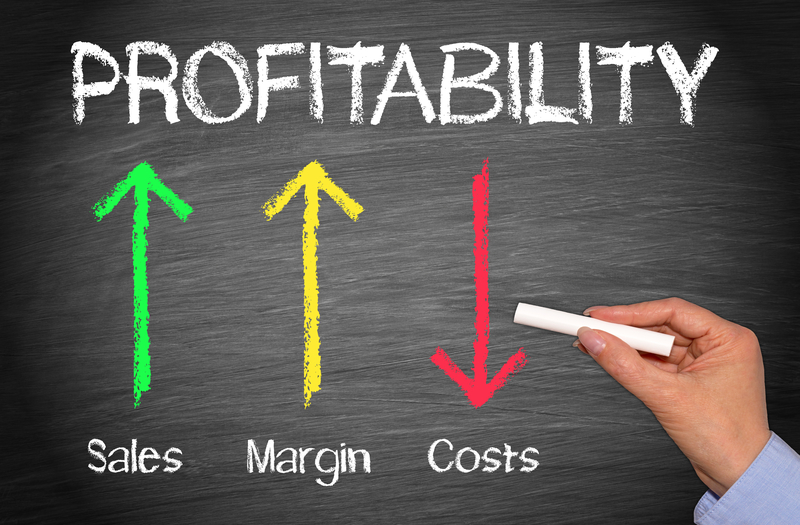There is a thought in online marketing that if you just get the mechanics right, then everything will fall into place and you’ll get rich.

I’m not here to dispute that.
Rather, I’d like to suggest that mindset plays a bigger role than most people think.
After all, if thoughts are things – and quantum physics tells us this is true – then what you think can have a huge impact on the success of your business.
Don’t believe me?
Take two people – one has a track record of building million-dollar businesses. The other has a track record of never having had a major success in his life.
Who would you bet on to build a million-dollar business? The one with the track record, of course.
But let me ask you this… do you think that both of these individuals view business – and specifically, the acquisition of money – in the same way?
You might guess that the successful person who has made millions of dollars sees money in an entirely different way than the person who has never been successful.
One sees opportunity everywhere – the other sees obstacles.
One sees challenges to overcome – the other sees problems that cannot be solved.
One believes leverage is the way to get rich – the other believes hard work will win the day.
One believes money is abundant – the other believes it’s scarce.
One thinks about how to make more money – the other thinks about how not to lose money…
… and so forth.
If you take the second person – the one who has never had a major success – and implant the thought patterns and beliefs of the first person concerning money and business…
…do you think the second person could then build a million-dollar online business as well?
That’s our question for the day. And you, with your consent, will be our test subject.
If you’ve never built a million-dollar business but you would like to, then I’m challenging you here and now to adopt the following thoughts and make them yours.
This means that reading them once won’t be enough. You’ve got to integrate them into your thinking 24/7. They have to become as much a part of you as your belief that you should eat, sleep and brush your teeth.
You’ve got to believe in these as much as you believe the sun will come up tomorrow.
In other words, you’ve got to make these thoughts YOURS.
You might do this by rereading the following list when you wake up and when you go to sleep each night.
You might write them out long hand, or record them and listen to them on your Mp3 player.
Just do whatever it takes to make these thoughts your own.
And just so you know, we did not pull these out of thin air. They come from a very solid book by Steve Siebold entitled, “How Rich People Think.” We’ve simply put our own online marketing spin on them.
If you’ve ever wanted a roadmap on how to be rich – I dare say this might be it.
Take these thoughts and combine them with any proven online business plan, and you should be making money – significant money – in no time at all.
Your results will vary. Remember that making these thoughts yours is just the first step – working your business is the second. And doing one without the other is probably just going to waste your time.
Just to be clear, we’re going to differentiate the two types of thinking as “Non-rich” and “Rich” thinking.
“Rich” is, of course, a relative term. To a millionaire, a billionaire is rich, while the billionaire might think the millionaire is poor by comparison.
Let’s get started…
The non-rich think: The rich are obsessed with money
While the rich think: Being obsessed with success is a wonderful thing
Why is it that we think obsessions are necessarily bad? If a person is obsessed with being healthy or with helping others, we generally don’t criticize. But if they are obsessed with being successful, we like to point out that there is something wrong with them. But why do we do this?
Most likely because it’s easier for us to say they are wrong than it is to become obsessed with success ourselves.
When you’re rich, you have the ultimate freedom to do what you want, when you want. Money is simply a gauge by which you measure how successful you are.
If you can think of business as a game you love to win, then you can become obsessed with success in a healthy, productive manner.
It’s all about what you can accomplish and how many people you can help with your online business.
The primary motivator for many millionaires is reaching a certain net worth – a number that is different for everybody. Assuming your business is legit and helps people – and hopefully it does – then the bigger the number you reach, the more people you’ve helped.
And think about this: when you hit your number, then you are free to chase higher pursuits such as philanthropy, time freedom and personal fulfillment.
So yes, go ahead and get obsessed with success. If that means working on your online business 14 hours a day for a few months, go for it. Success is calling and it’s time to answer that call.
The non-rich think: Saving is the way to get rich
While the rich think: Earning more money is the way to get rich
The non-rich cling tightly to their meager assets because of fear of loss and uncertainty of the future. Then when an economic correction occurs, they suffer catastrophic losses they cannot recover.
The rich, while understanding that saving and investing are important, also direct their energies toward making more money by serving others and solving problems. If a catastrophic loss occurs, they turn their attention to financial opportunities that occur in a downward economy and often become all the richer for it.
It’s a question of whether you operate from fear or abundance. Either mindset can lose money, but only the abundance mindset can quickly recover the money and more.
Focus on building an online empire of several different income streams, not on saving pennies.
The non-rich think: Trading time for money makes sense
While the rich think: Non-linear thinking and leverage is the way to get rich
Any time you’re trading your time for a paycheck, you’re actually trading the most valuable commodity you have – your precious time – for a fixed income.
If hard work made fortunes, every fast food employee would be rich.
The rich generate money through ideas that solve problems. And since there is no limit to ideas, there is also no limit to the money you can earn.
The right idea at the right time can make a fortune. Facebook, Amazon and Microsoft are classic examples of this.
Look at your own online business and you can see this at work. For example, if you write a book to sell to one person, you are trading time for money. This is what ghostwriters do.
But if you sell the book yourself, you can continue to sell copies of it every day for the rest of your life. You get paid over and over for work you did once.
And if you hire someone to write the book for you, now you are experiencing true leverage.
The non-rich think: Rich people are evil
While the rich think: Rich people are ambitious
The average person has been programmed to think rich people are somehow evil, dishonest and deceitful.
And while this is occasionally the case, as a general rule self-made rich people have used their drive, ambition and vision to build something that helps a lot of people.
Believing that rich people are inferior or morally lacking makes a great excuse for why a person isn’t rich – after all, they’re a nice person, and they don’t want to hurt anyone.
But if the non-rich will take responsibility for their financial plight and adopt the thinking of the rich, then they, too, can become rich.
And in the process, they can prove that not all rich people are evil.
The non-rich think: Being a lone-wolf is an positive quality
While the rich think: Building wealth is a team effort
When the non-rich folks have jobs, they’re paid for their individual efforts. They’re lone wolves, and they believe that if they start their own business, then they have to do it on their own.
But the rich (and future rich) know that building anything worthwhile is a team effort. Finding the right people and leveraging their knowledge and action is key to achieving success quickly and on a large scale.
The rich are team leaders. The non-rich try to do everything themselves.
The rich know their strengths and weaknesses and find people who fill the gaps in their knowledge and abilities.
The non-rich believe they can eventually learn everything they need to know to become successful.
If you can build a team and share the credit for your success, then you can achieve almost anything, and do it in a surprisingly short amount of time.
But if you go it alone, success will always be just around the corner and just out of reach.
In your online business, figure out what you’re good at and what you enjoy doing. Then outsource everything else. This will shave your time from conception to launch in half or less, keep you happy and more than double your profits.
Try it – once you do, you’ll never go back to trying to do everything yourself.
The non-rich think: Money is bad
While the rich think: Money is fantastic
If you were to ask most people why they don’t have money or even just what they think of money, you’ll realize why they’re broke.
They see ambitious people as greedy and self-serving. They think money is a necessary evil that must be managed but should not be their focus.
And there are better things to do with their time than be successful, like watch TV, sports and so forth.
The rich see money as a positive tool that can create freedom and opportunity to do what they want and have the life they enjoy. Money removes restrictions and lets them do what they want, when they want and where they want.
When you have money, you can engage in your favorite pastimes, help out the less fortunate and improve life for others beyond yourself.
Whether you believe money is evil or a tool for empowerment will make the difference between whether or not you have money.
The non-rich think: Formal education leads to wealth
While the rich think: Specific knowledge creates wealth
While rich people respect a formal education and encourage their children to attend university, they don’t see it as a way to build a financial empire.
Many self-made millionaires have very little formal education. They’ve amassed their wealth through getting, using and selling specific knowledge and information.
College typically prepares a person to trade time for money, and this is rarely the way to real wealth.
Rich people work from a non-linear mindset, with no limits or boundaries.
Give an employee a problem, and they will try to solve it for the company.
Give someone with a rich person’s mindset a problem, and they will not only solve it, but then sell the solution to everyone who needs it, thereby creating wealth.
And if the person with the rich mindset can’t solve the problem, they’ll hire someone to solve it for them, and again sell the solution to make their fortune.
Problem solving is an asset that can build empires. While academics and the middle class see problems as being complex, the rich mindset is able to break those same problems down to their essence to find the solution. Bill Gate’s founding of Microsoft is a wonderful example of this trait at work.
As an online marketer, you have the opportunity to present solutions to people around the world.
And you don’t always have to find the solutions, either. You can act as a reporter, finding out what people need and then reporting back to them with a product that fills that need.
The non-rich think: About spending
While the rich think: About investing
Do you really, truly need that new car? Or will your old one last for a few more years?
Living beyond your means isn’t living at all. It’s self-imposed slavery, where you have to go to work just to keep your nose above water and eek out a meager existence.
The self-made rich primarily buy the things they truly need and the things that will make them more money. True, once they become wealthy they do splurge, but by then they’ve earned the right.
Many self-made millionaires are ordinary people who went without luxuries and extravagances while they were building their fortunes. Instead of lattes and going to the movies, they invested in stocks and real estate.
But the real answer isn’t just to be frugal and live on as little as possible – it’s to double or triple your income and invest a large portion of that.
Ideally you want to live the good life, and if that means being cautious with your finances for a few years while you increase your income and your investments, it’s well worth the price you pay to then be financially free.
Investing your money into your online business can be the most freeing thing you ever do. Imagine being able to retire in 5-10 years, and then ask yourself if watching your money for that length of time while focusing on making more was worth it.
The answer will invariably be yes.
The non-rich think: “If only I could win the lottery…”
While the rich think: “Let’s get busy and make this happen!”
People love the lottery because they think it’s their only chance to get rich.
Sadly for most, they’re probably right. And it’s not because they’re not capable, either. It’s because they don’t believe in themselves and their ability to create wealth.
The rich know that talk is cheap, and take daily action to build their wealth because they know they can do it.
Beliefs dictate behavior, and behavior dictates results. If you believe you can succeed, then you’ll take action to do exactly that.
That’s why you’re in online marketing – because you believe you can succeed. But do you really, truly believe you can become rich?
If not, you might want to adjust your thinking.
The non-rich think: Money changes people
While the rich think: Money reveals people
The average person has beliefs that money turns good people into greedy, corrupt, uncaring jerks. This limiting belief not only keeps people poor – it also serves as an excuse for why they’re unsuccessful.
But the self-made rich know that success and money reveal the true person inside. If you were a crook before you were wealthy, you’ll be an even bigger crook once you’ve got money. If you were kind and generous before becoming wealthy, odds are you’ll do a lot of good with your money to help people, animals and the world.
Take a good look at your own personality, and then imagine them amplified by wealth. Do you like what you see?
If so, great. If not, you might want to make some changes now, before money amplifies traits you’re not proud of.
The non-rich think: You have to have money to make money
While the rich think: You should use other people’s money to get rich
Did you know it’s easier to borrow $10 million dollars than it is to borrow $10,000? It sounds crazy, but this is exactly how the rich think.
They don’t use the words, “I can’t afford it.” Rather, they think in terms of, “Is it worth buying, investing in or pursuing?” If it is, they find the money.
Again, this is all about linear thinking: “I have to make money in order to invest it in order to get rich.”
There’s nothing wrong with this, except that it takes time. A lot of time. And life is short.
Let’s say you’re starting an online business. You’ve got a proven business model that works, along with a great product. You could work yourself silly getting free traffic in order to get sales. Or you could get an investor who can pay for traffic. In the first case, it might take you months to make enough to buy consistent traffic, at which time your product might already be out of date. But in the second case, you can send massive, targeted traffic to your offer from day one.
In the first case, profits will come slowly. In the second case, you’ll be making solid money from day 1.
The non-rich think: Self-made rich people are somehow smarter
While the rich think: Self-made rich people are more savvy – not smarter
Memorizing information to get good grades in high school or score well on an IQ test won’t make you rich. There is a theory that the “A” students end up working for the “C” students, and this is likely true more than we realize.
Different people are smart in different ways. Some can memorize information, some are good at physical things, some are music smart, and others have an ability to figure things out.
The self-made rich have a talent for making money. Fortunately, no one is born with this talent (how many babies have you seen on Wallstreet?) which tells us that this talent can be learned.
And the best way to learn to make money is to find out what’s working for others and model their success.
That’s why ‘how to make money’ programs are so popular. People want to be rich, but they don’t know how to do it. They want someone to show them the ropes.
This is key if you’re in the make money niche. Explain to your prospects that your system is proven to work because others are already making money doing it.
Just follow the blueprint, and you can succeed. Just make sure your products live up to this promise.
By reading this article, you are now one step closer to becoming rich yourself.
And by knowing, understanding and incorporating rich thoughts into your everyday life, you are setting the stage for your own success.
Oddly enough, this article wasn’t about money at all – it’s about mindset.
And when you have the right mindset, then everything else falls into place.












